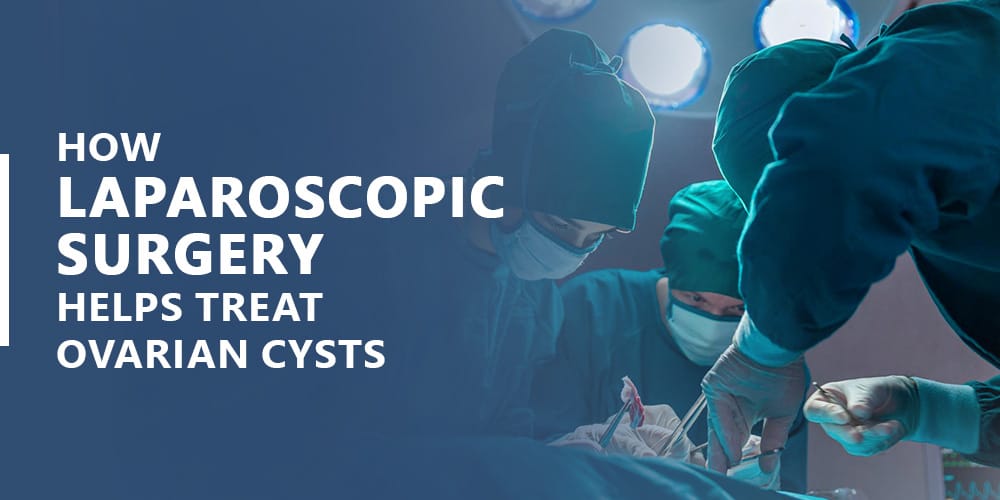As a woman who sees her gynecologist at regular intervals, you might know about laparoscopic surgery, but do you know about the signs you may need a laparoscopic hysterectomy?
A laparoscopic hysterectomy is a surgical procedure for the removal of the uterus, using minimally invasive techniques through small incisions usually less than one centimeter in length. This process usually makes sense when issues are really difficult, like constant heavy periods or ongoing belly pain caused by known issues such as fibroids, endometriosis, or adenomyosis that haven’t improved with meds or less invasive options. It is the gold standard for providing a definite cure for these specific conditions while maximizing patient comfort and recovery speed.
Signs You May Need a Laparoscopic Hysterectomy: Expert Guidance from Jaipur
Hysterectomy, or the removal of the uterus, is often a deeply personal and usually emotional decision. Many women in Jaipur who have suffered due to years of pain and heavy bleeding consult as to whether this definitive surgery is right for them. It is important to note that modern medical practice leans toward the laparoscopic hysterectomy approach, which offers minimal physical and emotional trauma from the operation.
Identifying persistent signs might be indicative of chronic symptoms that are dictating your life, and finding a specialist coupled with securing lasting relief begins with recognizing those first signs.
The Non-Negotiable Signs: When Symptoms Demand Definitive Action
A hysterectomy is usually reserved for when other treatments have been tried, and symptoms are severe enough to interfere significantly with daily function. The strongest clinical indications include:
- Uncontrolled Abnormal Uterine Bleeding (AUB): Heavy, prolonged bleeding that is unresponsive to hormonal therapies or less-invasive procedures, such as endometrial ablation. Chronic anemia and debilitating fatigue often result from this type of bleeding.
- Symptomatic Uterine Fibroids: Large, multiple, or poorly situated fibroids that are causing severe pelvic pressure, frequency of urination, or pain, particularly when future childbearing is not desired.
- Invasive Adenomyosis: The growth of the uterine lining into the muscular wall with severe and debilitating monthly pains along with heavy bleeding that medication cannot control.
- Severe Endometriosis: When the growth of uterine-like tissue outside the uterus leads to chronic, life-limiting pelvic pain, in cases where the disease has irreversibly scarred or deeply infiltrated the pelvic organs.
Women in Rajasthan dealing with these problems can find immediate relief by seeing a gynecologist in Jaipur who specializes in keyhole procedures such as laparoscopic hysterectomy.
What is a Laparoscopic Hysterectomy and Why It’s the Gold Standard?
A laparoscopic hysterectomy is a surgical procedure that utilizes a “laparoscope,” which is merely a small, lighted tube containing a camera, along with small instruments passed through three to four small incisions in the abdomen. This “keyhole surgery” allows all of the surgery to be conducted internally, including dissection and removal of the uterus, sometimes via the vaginal opening or one of the small incisions.
Benefits of Laparoscopic Gynecologic Surgery
The choice you make concerning this minimally invasive method is one that forms a basic part of your overall recovery from laparoscopic hysterectomy.
- Significantly Less Pain: Since muscle tissue is not cut, post-operative pain is significantly reduced in patients.
- Shorter Hospital Stay: The clinical evidence indicates that, typically, a one-day stay in hospital is required after a laparoscopic hysterectomy, unlike two to five days after an open surgery.
- Quick Return to Normal Routine: The time patients take to return to light or ordinary activity ranges from two to three weeks, which is quite shorter than six to eight weeks post-abdominal hysterectomy surgery.
- Reduced Rate of Complications: There is evidence of fewer wound infections and complications with laparoscopy.
A laparoscopic gynecologic surgery works well since it’s easier on your body. Rather than one big, sore incision, doctors make tiny openings. That leads to less damage inside, lower discomfort afterward, and also a quicker return home and to daily tasks.
Practical Guidance: Cost, Recovery, and Finding the Right Specialist
When facing a major operation, patients rightly consider the quality of care and the financial impact.
Understanding Laparoscopic Hysterectomy Cost (Value Over Price)
Although the initial cost of such an advanced laparoscopic hysterectomy may be ever so slightly higher than traditional surgery, it is nonetheless an impressive long-term cost saver. The decrease in overall hospital stay, by foregone charges of two or three evenings’ stay in the hospital, and absence from employment offer incredibly great monetary benefits.
The skill level of the surgical staff, especially in advanced laparoscopic gynecologic surgery, reduces the potential complications resulting in costly readmissions. The financial investment in high-quality healthcare represents an optimal long-term financial choice.
Understanding the Types of Laparoscopic Hysterectomy
All this is tailored to the clinical need of thepatient, according to which types of laparoscopic hysterectomy are carried out:
Total Laparoscopic Hysterectomy (TLH): The uterus and cervix are removed. This is the most common type of hysterectomy.
Laparoscopic Supracervical Hysterectomy (LSH) : Removal of the uterus, keeping the cervix intact. This may be faster and may carry a lower risk of bladder complications.
Hysterectomy with Oophorectomy: Removal of one or both ovaries and sometimes fallopian tubes, concurrently with hysterectomy if suspected malignancy or if the patient is at the brink of menopause.
Laparoscopic Hysterectomy Steps
The steps involved, regardless of type, include small incisions, cameras, and gentle disconnection of uteruses prior to extraction.

Getty Images
The Importance of the Women’s Health Specialist in Jaipur
Looking at local patients, it is paramount to seek the best gynecologist in Jaipur with fellowship skills in advanced laparoscopic surgery. This is because with advanced skills, including those possessed by a consultant laparoscopic surgeon in Jaipur, you can be treated with minimal invasion, particularly if you suffer from conditions such as large fibroids or endometriosis.
Seek out a doctor who gives you the benefits of laparoscopic surgery, transparent laparoscopic hysterectomy costs, and one who values minimal invasiveness in surgery.
Conclusion
hysterectomy surgery is important; making such an informed choice takes courage, but openly adopting the laparoscopic hysterectomy alternative means opting to take the most modern and friendliest route towards optimal health. Through your determination to require the utmost precision of your laparoscopic gynecological surgery, you can minimize your time and get back to your pain-free life.
You may be dealing with symptoms, or your doctor may be urging you to undergo hysterectomy surgery in Jaipur, it is crucial that you avoid traditional surgery and seek expert advice. To get all your queries answered, schedule a visit with one of the best gynecologists in Jaipur.
Frequently Asked Questions
What is a Laparoscopic Hysterectomy used for?
Laparoscopic hysterectomy is employed in dealing with serious and debilitating conditions such as severe uterine fibroid, endometriosis, chronic pelvic pain, and severe and uncontrolled uterine bleeding due to failure of all forms of conservative management. The surgery offers a definitive cure for such conditions.
How long does a laparoscopic hysterectomy take?
The laparoscopic hysterectomy steps generally range from 1.5-3 hours, depending upon the case, such as the presence of extensive adhesions and huge fibroid tumors. The overriding concern of the surgeon, at all times, is thorough safety and not haste.
Does a laparoscopic hysterectomy cause immediate menopause?
No. A laparoscopic hysterectomy will induce immediate menopause only if both ovaries are simultaneously removed. But if the ovaries are left intact, then overall bodily functions, including producing female hormones, remain normal, and menopause can occur at the normal age.
How soon can I return to work after the procedure?
Because of its minimal invasiveness, the post-operative recovery time for patients undergoing laparoscopic hysterectomy is very fast. This takes only 24 hours, and patients can resume light desk work in 10-14 days, as opposed to 4-6 weeks after open surgery.
What should I look for in a laparoscopic surgeon in Jaipur?
Search for a women’s health specialist in Jaipur with advanced fellowship training in minimally invasive surgery, with high-volume experience in such surgeries, and with minimal conversions to open surgery. This will ensure accuracy and smooth execution of the surgery.






